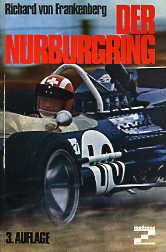 My neighbour was going to throw the book a picture of which you see here into the bulky waste. At our home in Riemerling, such a thing still exists: in intervals of eight weeks, the “bulky waste” is collected. In many households, the attics are cleared out and many nice items lie on the streets waiting to be collected. Several trucks with Eastern number plates will then circulate through the beautiful town of Riemerling and load up.
My neighbour was going to throw the book a picture of which you see here into the bulky waste. At our home in Riemerling, such a thing still exists: in intervals of eight weeks, the “bulky waste” is collected. In many households, the attics are cleared out and many nice items lie on the streets waiting to be collected. Several trucks with Eastern number plates will then circulate through the beautiful town of Riemerling and load up.
When I saw the book I considered it too precious for bulky waste. Consequently, I asked my neighbour if he minded me taking it and he gave it to me.
It is the kind of book I like reading for entertainment once in a while. And it also contains plenty of historical pictures. After all, the first edition is of 1965, so you could say it is vintage material. On the picture, you see the third (and last) edition of 1970.
As it turns out, reading the book is well worth it. You learn a lot about the history of the “Nürburgring”. Also, you learn quite a bit about how enthusiastic people were about racing even in those days.
But you also read that there were no more than 40,000 automobiles in Germany in 1920. And that a huge majority of the population was against the increasing motorization (Motorisierung) of individual traffic at the time. In retrospect, they were probably right.
For pioneers and interest groups, the “Nürburgring” was an important project in order to promote motorization. In those days, it was widely assumed that people would mainly be convinced that “automobiles mean progress” if witnessing the exciting racing sport. For the economy, the car was a huge, new market of the future. The upper classes wanted to preserve their privileges from the times when they drove coaches. Consequently, if people had reservations, those had to be pushed to the background. As today, business had priority.
Now I wonder how many cars will still roll on German streets a hundred years after the first race on the “Nürburgring”. That will be towards the end of 2030.
As I see it, the question is a very interesting one. And if you read between the lines of this book you even find the occasional answer. Well, it is definitely worth reading, the pictures alone make it great stuff.
RMD
(Translatead by EG)

